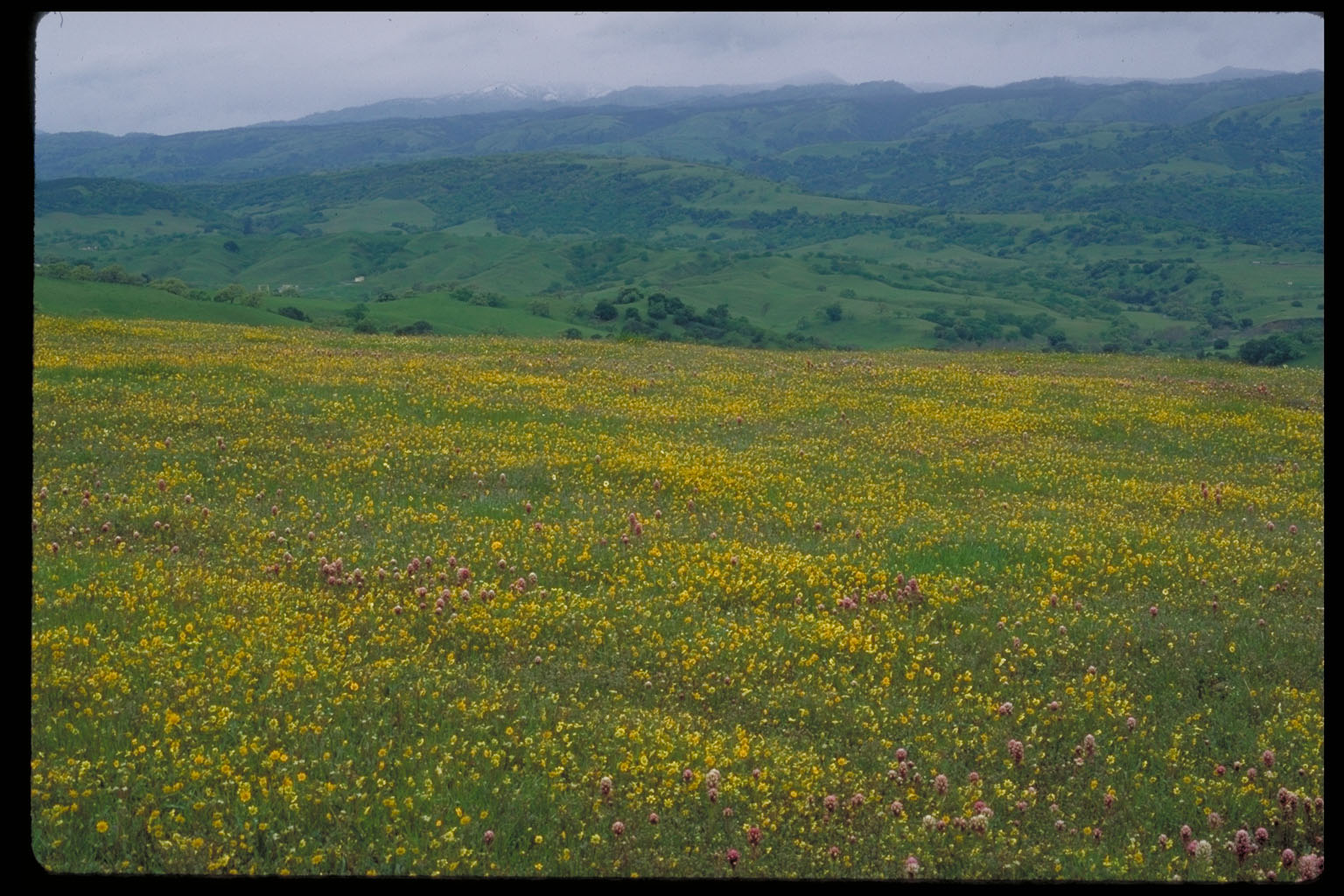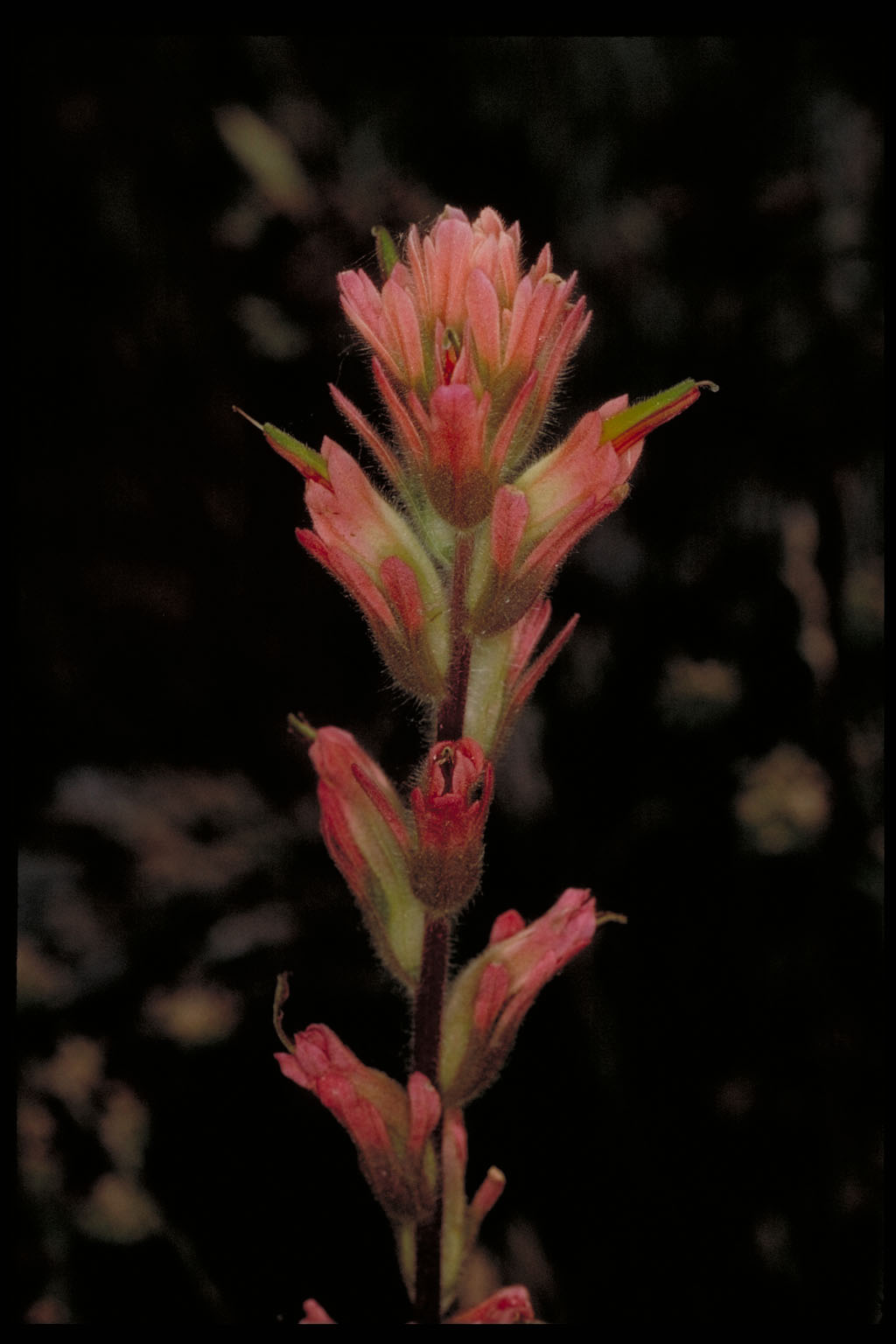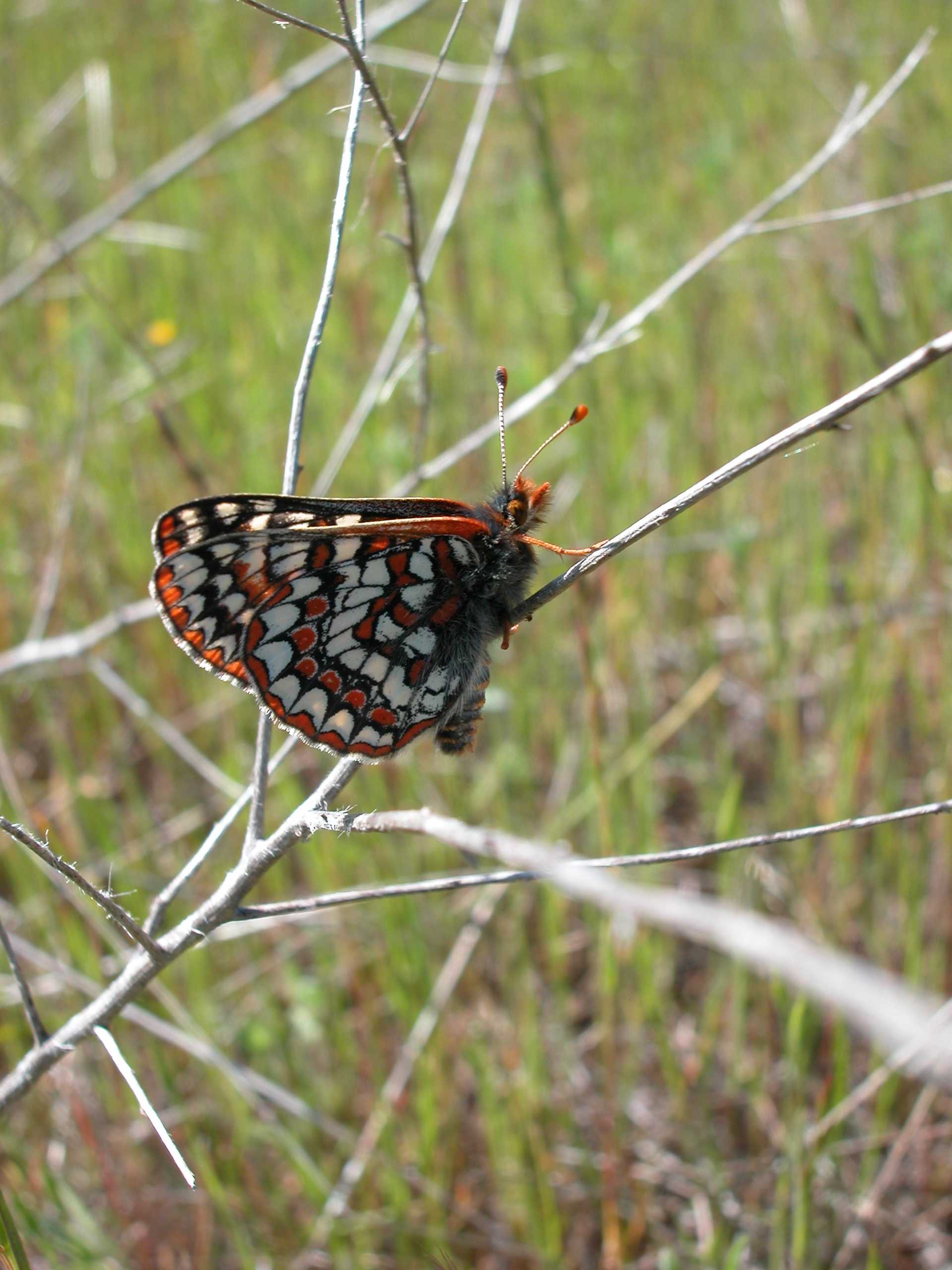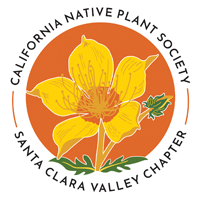 |
| Spring wildflowers at Coyote Ridge (Photo: Ken Himes) |
Imagine a place of sweeping vistas, singing grasses, wildflowers, eagles, falcons, coyotes, but few people. All this within view of one of the largest metropolitan areas in America. All this two miles from an interstate highway. The hills on the eastern side of the Santa Clara Valley, known collectively as the Diablo Range, are in places made up of a rock known as serpentinite, or more commonly, just serpentine. Coyote Ridge is a block of serpentine fifteen miles long and two miles wide just east of US 101. In the spring it is a mass of wildflowers, right down to the highway. Kestrels can be seen along the highway, hovering as they look for prey. Red-legged frogs can be seen in ponds, and pronghorns can be seen in the hills beyond.
At other times of the year the brown hills may go unnoticed. But if you look up, you will see outcroppings of the curious serpentine rock, so named because unweathered pieces can be green and scaly like a snake. And nestled in among these outcroppings, the rare and endangered plants. Perched on the rock may be a horned lark, or a California quail. And somewhere within the dried foliage, the larvae of the rare Bay checkerspot butterfly listed federally listed as a threatened species.
A key link in the open space belt around Santa Clara Valley
The ridge is contiguous with public and undeveloped lands to the east in the Diablo Range. It is part of a corridor of connectivity through which wildlife can pass from the coastal ranges of the Santa Cruz Mountains to the Central Valley. A map is available here.
 |
| Tiburon Indian Paintbrush (Castilleja affinis neglecta) (Photo: John Game) |
A conservation goal of the Santa Clara Valley Chapter of CNPS
Since the early 1990's, CNPS-Santa Clara Valley has conducted vegetation surveys, monitored rare plant populations, led field trips, produced videos, brochures and articles, held public meetings, and advocated conservation policies before public bodies. Protection of this treasure has been adopted by the City of San Jose, the Valley Transportation Authority, the Santa Clara County Open Space Authority, the Silicon Valley Land Conservancy and the Nature Conservancy.
A treasure house of rare plant species
This area contains at least fifteen plants identified by the California Native Plant Society as rare or endangered. Four of these are on a federal listing of endangered plants: they are the Santa Clara Valley dudleya, the coyote ceanothus, the Tiburon Indian paintbrush, and the Metcalf Canyon jewelflower. The complete list of special status plants on Coyote Ridge is here.
A butterfly on the edge
 |
| Bay Checkerspot butterfly (Photo: Stuart Weiss) |
The last healthy populations of the Bay checkerspot butterfly are found along Coyote Ridge. The caterpillars feed only on California plantain and the adults sip nectar from wildflower species that thrive in the serpentine soils of the ridge. The preservation of this Coyote Ridge population is critical to the survival of this rare and beautiful butterfly.
A natural science laboratory
Scientists from University of California Berkeley, Davis, Stanford University, San Jose State University, Santa Clara University, and elsewhere are studying the effect of soils, temperature, pollinators, and human environmental factors such as air pollution on the ecosystems. A list of research reports is here.
A part of our heritage
The ridge remains much as it was before the development of the valley, a piece of our past frozen in time.

